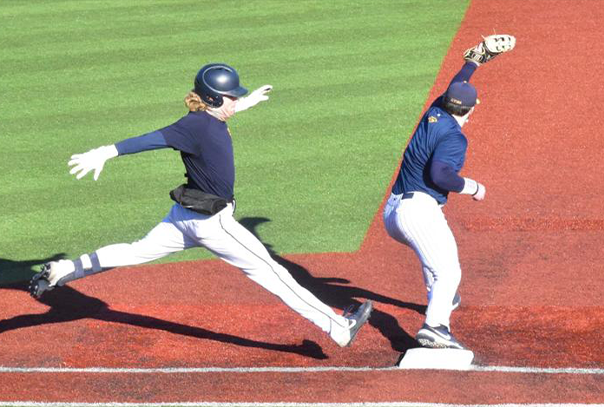 During my coaching career at San Jose State University, I utilized the intrasquad competition numerous times during the Fall and after Christmas break. If managed properly and efficiently, the intrasquad experience will improve your team more than any other drill or practice plan that you can devise.
During my coaching career at San Jose State University, I utilized the intrasquad competition numerous times during the Fall and after Christmas break. If managed properly and efficiently, the intrasquad experience will improve your team more than any other drill or practice plan that you can devise.
This type of competition presents the opportunity for the players to participate in game situations, and in a controlled environment that will prepare them for actual contests. Here are some of the key points that our staff felt the intrasquad provided:
- Evaluation of player performance
- Opportunity for everyone to participate
- Chance to work on team philosophies and tactics
- Provide game-like situations and experiences
- Allow players to demonstrate versatility
- Competition!
- Develop confidence and trust in ability and team concepts
- Handling umpires (if and when they are assigned)
- Emphasis on coach/team priorities
Any time we played an intrasquad, our goals as coaches included evaluation of our players’ instincts and skills, installing pitching patters, hitting plans, base running objectives, and executing game situations and tactics.
We had different approaches to how we selected the teams for our intrasquad games. We often changed the lineups from week to week. Some of our configurations included starters vs. reserves, experienced pitching vs. starting lineup, “rookies” vs. starting lineup, newcomers vs. veterans, and a mix of whomever was available on some days!
We also used this time as a trial-and-error for our coaching staff. Some of our better ideas included the following:
- Any ground ball double play turned by the defense automatically ended the inning, even if there were no outs to start the play.
- Time between innings would be 60 seconds, or 90 seconds if a new pitcher was entering the game. Strike/ball penalties were assessed if the pitcher/batter was not ready.
- Start odd innings with runners on base.
- Offensive signs were given by the third base coach.
- Pitches were called from the dugout during odd innings, catchers call the game during even innings.
- Mandatory pickoffs to each base for every pitcher, and mandatory back picks from the catcher.
- Any called third strike resulted in a loss of the next at bat for a hitter.
- Any base on balls, hit by pitch or successful drag or push bunt resulted in an extra at-bat for the hitter (a “designated runner” enters the game to run and the player gets back-to-back plate appearances).
Another way to get creative with intrasquads is a points system. We wanted to overemphasize certain elements of the game, so we added points to the run total for each team. Here are some that we came up with:
- Win the inning: 2 points
- Score in the first inning: 1 point
- “Answer back” with a run: 1 point
- Record a 1-2-3 inning: 1 point
- Score in the ninth inning: 1 point
- No freebies allowed in an inning: 1 point
Clearly it’s up to your coaching staff to decide how heavily to weigh the points system. Another way to keep score is to add points up in the hits column on the scoreboard and determine how many points are required to add additional runs.
Of course, we would want to have consequences for the losing team, and rewards for the winners, which is no different from how most teams do it. Winners would get to simply gather and store equipment, losers would have additional conditioning, field prep, etc.
These intrasquad games were extremely competitive. Once we got more creative, we noticed a significant increase in execution and attention to detail. Note: having a live scoreboard and someone to operate it also makes a huge difference!
Our scorekeepers were well versed in the scoring system and had backup help to preserve accuracy and confirmation on any questionable situations. You can tweak or adjust this format any way you think would benefit your program, but make sure to take the time to explain and justify your reasoning. We invested a lot of time and effort to make this a productive exercise and experience for our players. It will be well worth the effort! IP
Before retiring in 2012, Sam Piraro was the head coach at San Jose State University for 25 years. He won more than 800 games, three WAC championships and made a pair of NCAA Tournament berths, advancing to their first-ever College World Series in 2000. Piraro is currently an assistant coach at Archbishop Mitty High School, where the entire staff played for him at San Jose State. Check out Coach Piraro’s first article on intrasquads, “Making the Instrasquad Relevant in Your Program” (March/April 2019) online at ABCA.org/magazine.